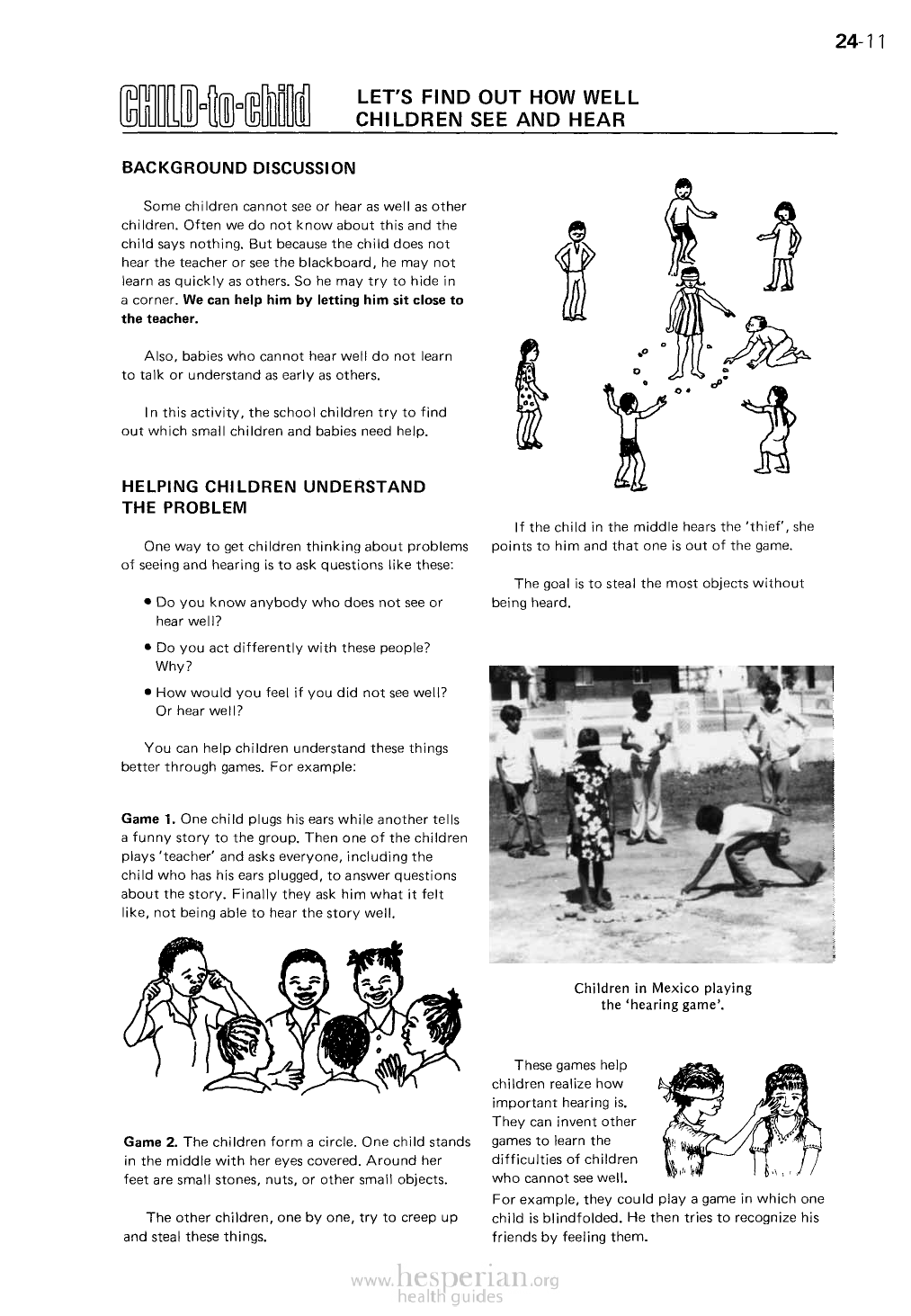
LET’S FIND OUT HOW WELL
CHILDREN SEE AND HEAR
BACKGROUND DISCUSSION
Some children cannot see or hear as well as other
children. Often we do not know about this and the
child says nothing. But because the child does not
hear the teacher or see the blackboard, he may not
learn as quickly as others. So he may try to hide in a
corner. We can help him by letting him sit close
to the teacher.
Also, babies who cannot hear well do not learn to
talk or understand as early as others.
In this activity, the school children try to find out
which small children and babies need help.
24-11
HELPING CHILDREN UNDERSTAND
THE PROBLEM
One way to get children thinking about problems
of seeing and hearing is to ask questions like these:
• Do you know anybody who does not see or
hear well?
• Do you act differently with these people?
Why?
• How would you feel if you did not see well? Or
hear well?
You can help children understand these things
better through games. For example:
If the child in the middle hears the ‘thief, she
points to him and that one is out of the game.
The goal is to steal the most objects without
being heard.
Game 1. One child plugs his ears while another tells
a funny story to the group. Then one of the children
plays ‘teacher’ and asks everyone, including the
child who has his ears plugged, to answer questions
about the story. Finally they ask him what it felt like,
not being able to hear the story well.
Children in Mexico playing
the ‘hearing game’.
Game 2. The children form a circle. One child
stands in the middle with her eyes covered. Around
her feet are small stones, nuts, or other small objects.
The other children, one by one, try to creep up
and steal these things.
These games help
children realize how
important hearing is.
They can invent other
games to learn the
difficulties of children
who cannot see well.
For example, they could play a game in which one
child is blindfolded. He then tries to recognize his
friends by feeling them.